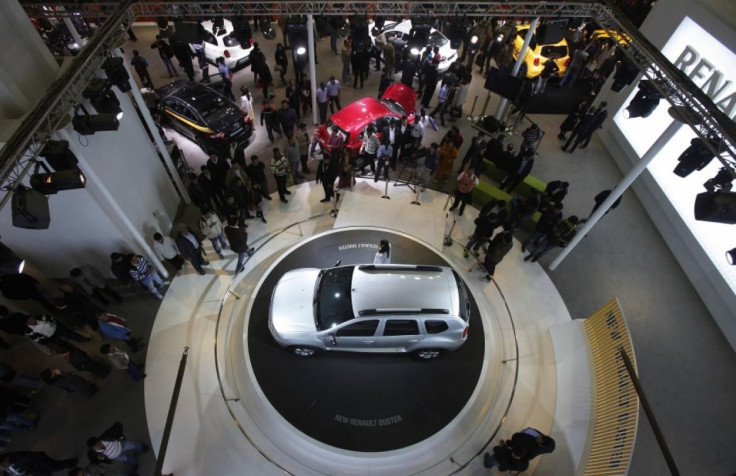India Auto Sales: Honda, Hyundai, Suzuki Sales Leap As Indian Auto Market Benefits From Low Oil Prices, Increased Political Stability

Bolstered by improved economic conditions, India’s auto market grew for the first time in three years during the fiscal year that ended in March. The improvement comes as Asia’s third-largest economy is undergoing a series of policy reforms under the new government of Prime Minister Narendra Modi.
Led by demand for recently released low-cost Hondas, Hyundais and Suzukis, Indian consumers bought nearly 5 percent more cars, totaling nearly 1.9 million, the Society of Indian Automobile Manufacturers (SIAM) announced on Thursday. Still, consumer demand is lower than it was in the 2010-11 fiscal year.
"The overall yearly performance is far from satisfactory," S. Sandilya, chairman of commercial truck manufacturer Eicher Motors, in Gurgaon, India, told the Business Standard.
In the previous two years, car sales fell by as much as 7.74 percent, as the country was grappling with persistent high prices that have been mitigated by a steep drop in oil prices since last year and interest rate changes by its central bank.
Political gridlock was checked, too, after Modi’s nationalist Bharatiya Janata party handily won a comfortable majority in the national parliament last May, which opened the way for a series of growth-focused pro-business reforms.
"India's outlook for growth is improving gradually," Raghuram Rajan, governor of the Reserve Bank of India, said earlier this week in a policy statement.
India is poised to overtake China in gross domestic product growth next year, reaching 6.5 percent compared with 6.3 percent, according to the International Monetary Fund. India still lags behind China in raw might, however, with an economy one-fifth the size of the East Asian behemoth.
India’s auto market is dominated by small, low-cost compacts, three-wheel auto rickshaws and motorcycles. But a growing population of the urban middle class has automakers scrambling to grab market share in larger sport utility vehicles.
Hyundai Motor India, the country’s second-largest automaker, said earlier this month it plans to add five new SUVs in the next three to four years to take on rivals Renault and Mahindra in the growing market for the larger, higher-priced vehicles. Ford Motor opened its $1 billion vehicle assembly complex last month in the northwestern state of Gujarat. The campus will produce 270,000 engines and 240,000 vehicles a year. It gives Ford a way to sell domestically made Ford cars at a lower price and provides an exporting base to export its vehicles to other Asian countries.
Automakers unleashed 27 new models in India last year, according to SIAM. Honda saw a nearly 41 percent jump in sales, followed by Maruti Suzuki (11.1 percent) and Hyundai (10.6 percent). Ford, General Motors and domestic maker Tata Motors saw sales declines.
© Copyright IBTimes 2024. All rights reserved.






















